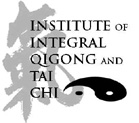Impact
of Qigong Exercises on Perceived Stress Levels
Pre & Post Intervention Study 2007
Principal Investigator: Kathleen A. Levac RN MS MQT
Co-Investigators: Linda Larkey, PhD, & Roger Jahnke OMD, IIQTC
Summary
The purpose of this study is to investigate if regular practice of Qigong exercises can reduce perceived stress levels in adults. It will also look for changes in blood pressure and weight (BMI) as participants are willing to participate.
The study tool is the 10 item Perceived Stress questionnaire with additional questions on sleep, pain, energy level, and a 1-10 overall stress, energy, and health rating. It will be used to measure the perceived stress level before and after an 8 week qigong program. The 8 week qigong program will consist of 1 hour weekly class during the time frame of January 1, 2007 – December 31, 2007. This tool will measure the impact of the first 6 weeks of the program.
Additional demographics that will be collected include: gender (male/female), age in years, ethnic identity, sense of well being, exertion level, and intensity of qigong practice. Optional items are height, weight, blood pressure, and health history information on heart disease and cancer.
The persons to be surveyed are participants of a qigong class taught by an IIQTC instructor using IIQTC curriculum.The study participants are assigned a study participation number that is noted on the pre andpost program survey. The perceived stress levels before and after the qigong stress levels will be compared to determine the impact of the qigong program.
Study Participant Inclusion Criteria:
- “New to qigong” students preferred (students with previous qigong practice experience may be included)
- Must have attended 4 of 8 classes or report consistent practice outside of class,
Study Participant Control Criteria:
- Major life event after pre-program survey (e.g. separation/divorce, death of loved one, move, job change)
- New energy therapy started after pre-program survey (such as acupuncture, reiki, biofield interventions etc)
- Current other energy therapy practice such as yoga or traditional tai chi
Participants meeting inclusion and control criteria will be identified via the post program survey. All survey data can be submitted but subgroups will be segregated for analysis. Students who have been actively studying qigong prior to the study should not be included in the study survey process. Data will be analyzed for statistical significance. The data is de-identified so that researchers will not be able to link participants to the data.
Reports will be summarized and distributed to the instructors participating in the study. Data will be reported in nationwide aggregate form only. Instructors and corporations with an aggregate sample size of over 30 participants, may request aggregate data for their subgroup (e.g. range and average PSS score for group). No individual participant data will be provided. A data processing fee may be assessed.
If there is a possibility of creating a control group of similar people, please contact the coordinator to discuss options (e.g. enough participants for 2 consecutive sessions to randomly assign to first or second session.)
